Sedge
Dune sedge, Carex pansa, (KARE-ex PAN-sa)
Field sedge, Carex praegracilis, (KARE-ex pree-GRASS-il-is)
Sedge is not a grass, but several species can be used to create an excellent turf. They are very drought tolerant and can be mowed periodically or left unmowed. They can also be used in the landscape, but they can be a bit invasive if not given enough space.
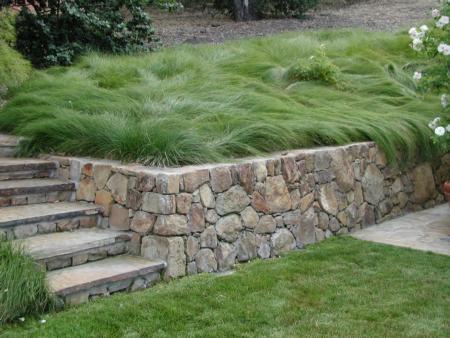
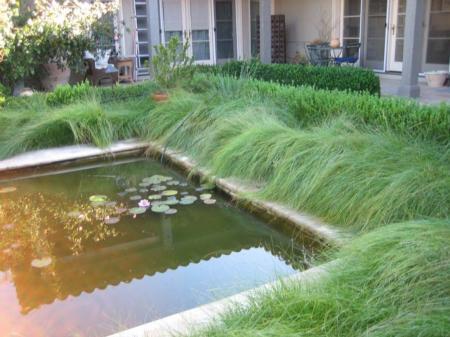
Carex lawns are difficult to sow by seed since germination rates can be highly variable, so they are generally planted by plugs or 2 1/4" pots (liners). They spread by short rhizomes that spread relatively slowly, so they should be planted no farther than 9 in. apart for turf. Planting even closer would shorten the time to complete establishment and reduce weed growth, but is much more expensive and time consuming to plant.
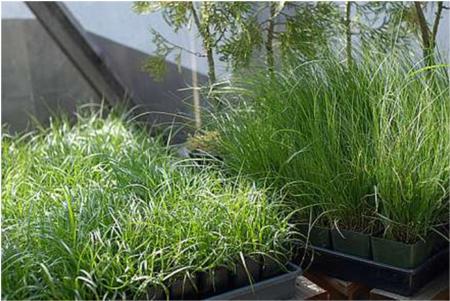
The two species have been thought of as very similar, and there has been debate about whether there really is a difference since there is huge variability among local populations from where they are collected in the wild. However, most C. praegracilis populations are generally taller than C. pansa, and C. praegracilis is the species most used in the turf trade.
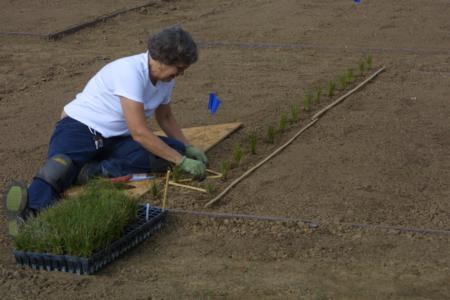
Growth was fairly slow in fall and winter, and by May 2011 they were spreading non-uniformly. UC Verde buffalograss fills in much more quickly when planted no earlier than May.
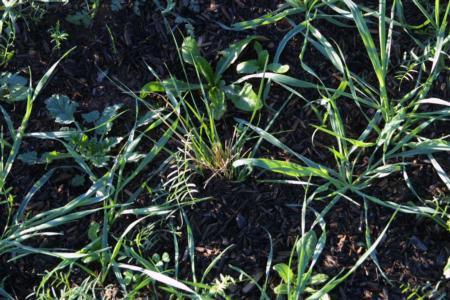
Both grass and broadleaf weeds were a major problem initially, and we thoroughly hand-weeded 4 times through May 2011. We didn't use pre- or post-emergent herbicides, but they certainly would be useful in a larger planting.
We are using only organic products and methods on the plots. A thicker layer of fine mulch would have also helped.
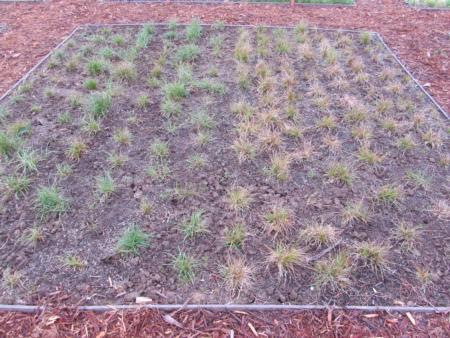
Rust has been known to attack Carex, and in the wet winter of 2010-11, rust seemed to be worst on the C. praegracilis (right), and less on C. pansa.
As of May 2011, C. praegracilis seems to be lighter green and to grow taller than C. pansa. C. pansa may be spreading a bit more.
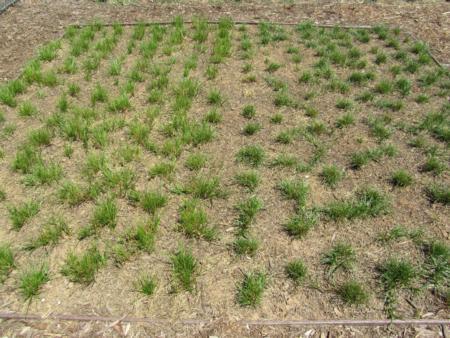
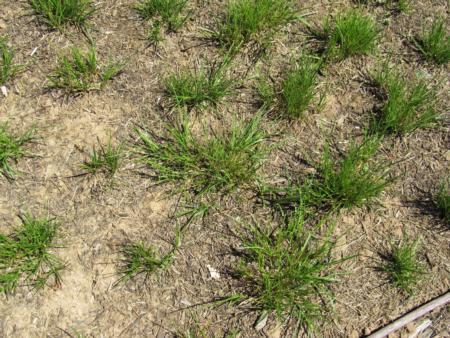
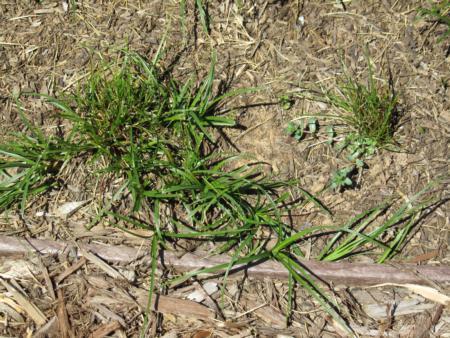
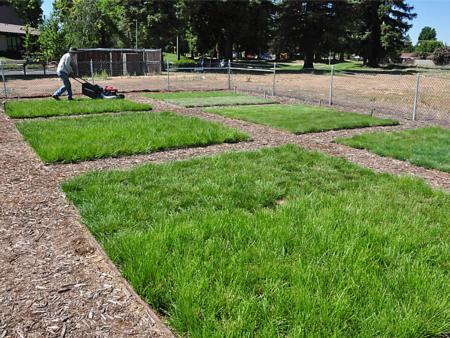
In this photo all three split plots--each with C. praegracillis closest to the viewer. It grows taller than C. pansa.
For more information on Carex turf, see these web sites:
Carex pansa (Pacific dune sedge): The sedge with the other name, by David Amme.
Carex pansa photos, by David Amme

